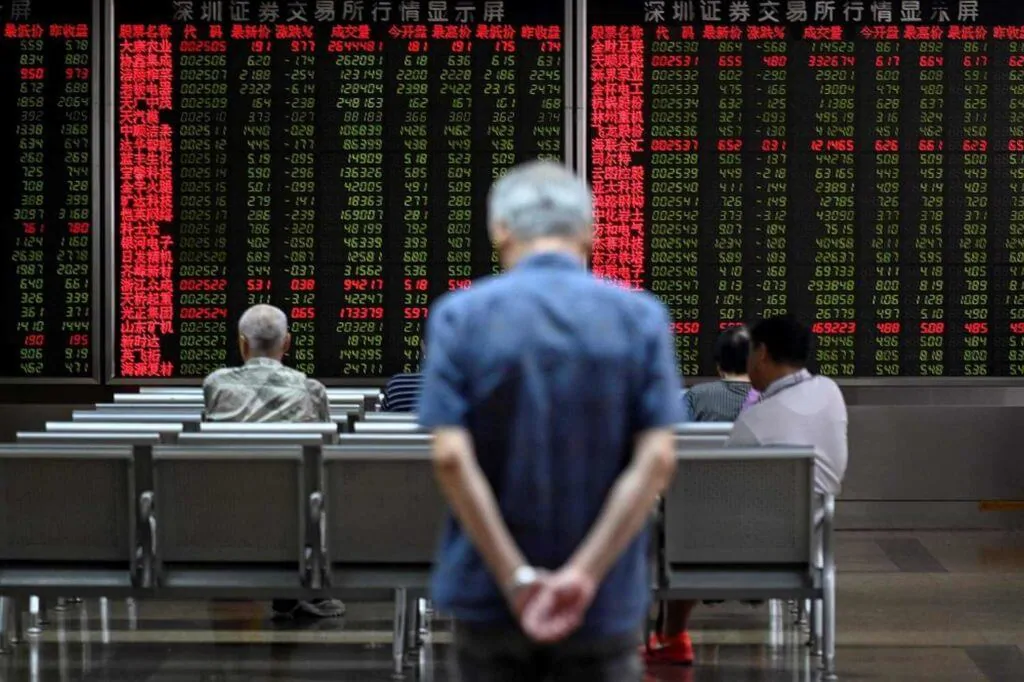All the leading equity funds in Asia are buying green Chinese stocks. Here's why
What do Asia's five most lucrative investment funds with a turnover of more than $1 billion for 2021 have in common? They are all betting big on China's push into renewable energy.
According to data compiled by Bloomberg, the funds have returned at least 40% each by investing in stocks that are part of renewable energy and electric vehicle supply chains. Leading the ranking was the China AMC Energy Innovation Equity Fund with a return of $3.7 billion with a total return of 55%, followed by First State's Cinda New Energy Industry Equity Fund and HSBC Low Carbon Pioneer Fund.

China's drive to achieve carbon neutrality by 2060 is fueling the growth of the renewable energy market, which is already the world's largest and one of the leading markets for electric vehicle manufacturers and suppliers. This has led to record growth and staggering valuations for some stocks in a sector that has surged globally this year as politicians try to curb fossil fuel subsidies and coal use.
"Carbon neutrality will be one of the most important investment themes over the next five to 10 years" and there are opportunities for firms in the sector to grow several or even tenfold, said Bin Lu, manager of the Shanghai-based HSBC Low Carbon Pioneer Fund.
Big opportunities
Contemporary Amperex Technology Co., the world's largest battery maker, is consistently among the top 10 most successful funds. According to Exness Thailand, shares have jumped more than 80% to record highs this year. Automaker BYD Co. and supplier Tesla Inc. Ganfeng Lithium Co. - other investor favourites - up more than 50% each.
These shares were boosted by President Xi Jinping's pursuit of "shared prosperity", which underscores sustainable growth. His announcement of a large-scale renewable energy project in the desert also supported solar and wind power stocks.
For Raymond Jing, who runs the ChinaAMC New Horizon China A Share Fund, which has returned over 40 per cent this year, CATL's penetration rate and market share are "rising fast", which could eventually push its forward price-to-earnings ratio down to 40 to 50 times from about 78 times.
Certainly not everyone is happy with the valuation of some popular names in the clean energy sector. In a sign of that concern, shares of solar glass maker Xinyi Solar Holdings Ltd. are down about 24% from their August peak, while shares of inverter maker Sungrow Power Supply Co. are down about 13% after hitting a record high in October.
Investor fears are exacerbated by bets that the Federal Reserve will shrink faster than expected and the passage in the US House of a law designed to punish China for its treatment of Uighur Muslims. The lithium battery supply chain is also facing some pressure from Beijing's guidelines published last month to reduce capacity increases.
"The short-term new energy market is very hot, and share prices of some companies are showing a tendency towards short-term bubbles," Zheng Zehong, manager of China AMC Energy Innovation Equity Fund, said in a third-quarter report. He said the fund has made some adjustments to its positions. He added that in the long term, "ample investment opportunities" remain.
Political support
However, asset managers say the tailwinds of politics will support China's green equities.
The government has pledged to accelerate the development of electric vehicles and highlighted ambitions to reduce carbon emissions per unit of industrial output by 18 per cent over the 14th five-year period. CATL and another leading manufacturer of batteries for electric vehicles, Eve Energy Co., are expanding production at a time when electric vehicle sales in China are approaching a total of more than double in 2020.
In 2022, "we are very focused on car batteries now, but there is still room for growth in energy storage systems," said Wang Yang, fund manager of the Guotai Intelligent Automobile Equity Fund. "The sector is consolidating," with CATL and BYD among the top five firms that will eventually control about four-fifths of the market, he added.
More: Fundstrat says S&P 500 index has 7% upside potential at year-end as number of risky companies rises







